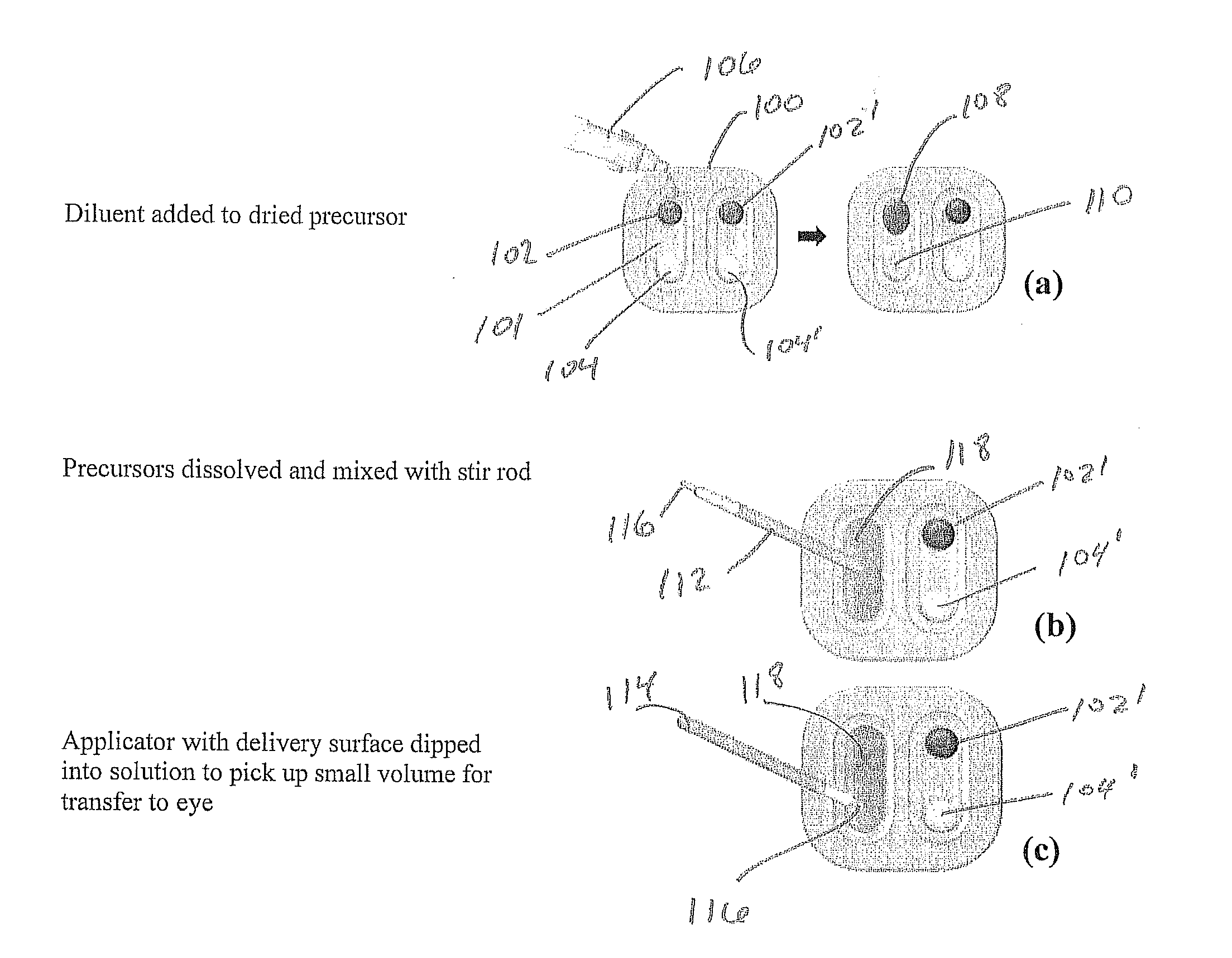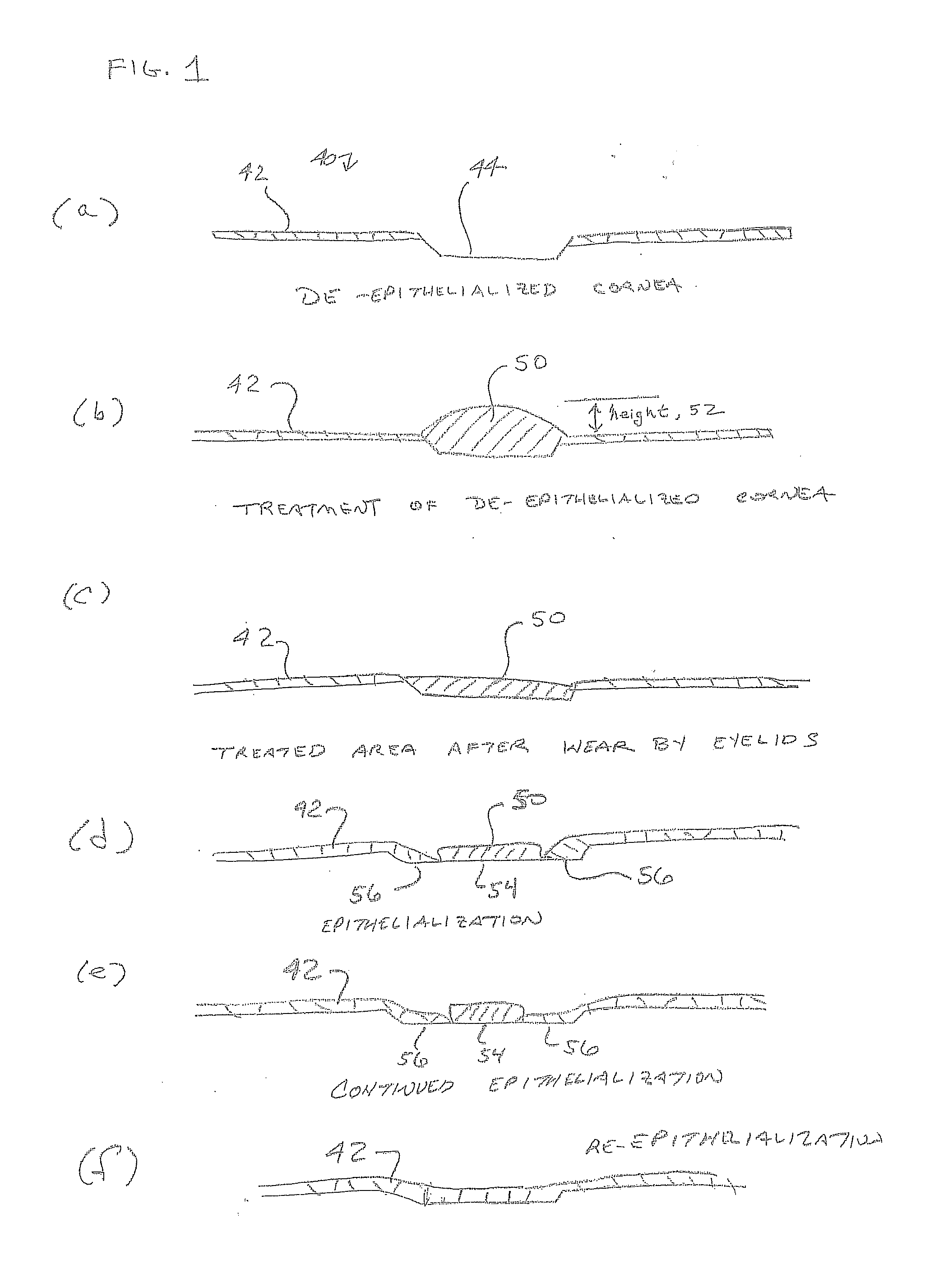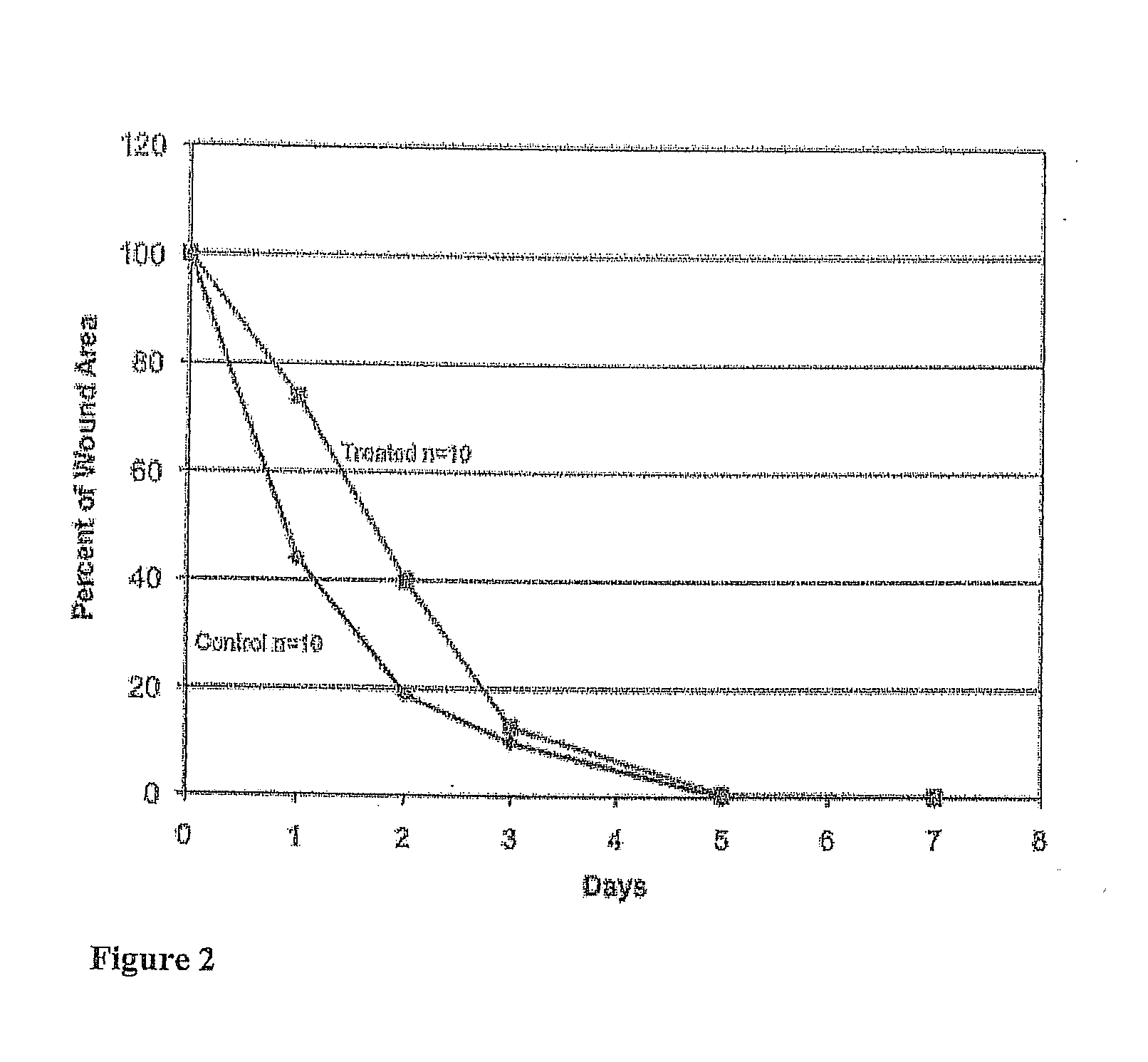Flowable hydrogels for control of cell in-migration
a technology of hydrogels and cell in-migration, which is applied in the field of hydrogel formation, can solve the problems of inability to routinely use pain in the eye caused by trauma or surgery, and the general progress of bandages between the eye and the eyelid, so as to achieve continuous coverage of the wound, the effect of reducing discomfort and complications
- Summary
- Abstract
- Description
- Claims
- Application Information
AI Technical Summary
Benefits of technology
Problems solved by technology
Method used
Image
Examples
example 1
Test Conditions, Hydrogel Swelling (Shrinkage) and Degradation for Hydrogels
[0121]One deposit consisted of 8 arm 15K SG PEG (8.7 mg), sodium phosphate monobasic buffer, and FD&C Blue #1 (0.01 mg). The other deposit consisted of trilysine acetate (0.52 mg), sodium phosphate dibasic and sodium tetraborate decahydrate. Water volumes were varied with WFI from 40 μl to 280 μl in 40 μl increments to provide a range of gels with varied solids content. The succinimidyl glutarate:amine ratio was 1:1. Degradation In Vitro Phosphate Buffered Saline (PBS) was added to vials containing the gels. The vials were then transferred to a 37° C. water bath for degradation. The degradation process as tracked by daily visual inspection until complete disappearance of the sample was observed.
[0122]Gel time testing Gel time was tested using a polycarbonate rod (2 inch long and one-eighth inch diameter) to stir the two solutions within the tray well and then lifting the rod 3 inches every second. Gel time (...
example 2
Hydrogel Swelling (Shrinkage) and Degradation for Alternative Hydrogels
[0126]The materials and methods of Example 1 were used except that a buffered diluent was used instead of WFI to make the solution in order to minimize the effect of diluent on the gel time of the composition. For that reason, both sodium phosphate dibasic and sodium tetraborate decahydrate salts were changed from being dried deposits in Example 1 to being dissolved in solution with water for injection to make the diluent in Example 2. Gels were prepared by adding diluent to each deposit, then mixing the two together. Diluent volumes were varied from 160 μl to 320 μl in 40 μl increments to provide a range of gels with varied solids content. The results are shown in Table 2.
[0127]This formulation was diluted with a diluent rather than water as in the Series 1 formulation. Since the diluent contained sodium phosphate dibasic and sodium tetraborate decahydrate, it was basic in pH additional diluent resulted in less ...
example 3
Hydrogel Swelling (Shrinkage) and Degradation for Alternative Hydrogels
[0128]Another alternative hydrogel formulation, series 3, was tested as in Example 2. The formulation used in series 3 was essentially identical to that used in Example 2, with the exception of the polyethylene glycol (PEG) macromer. In series 3, the macromer end groups were changed from glutarate (SG) to succinate (SS). The base polymer was an 8 arm 15K PEG SS molecule. The results of this testing are shown in Table 3.
[0129]As in Example 2, the effect of dilution is smaller than in Example 1. In fact, Example 3 showed no effect of dilution over the range studied. It should be noted that a Example 2 formulation at a dilution of 80 μl, typically gels in 25 seconds. The Example 2 material in Table 3 shows that at 160 μl dilution the gel time is still about 25 seconds, which agrees with the results for Example 3 in Table 3.
TABLE 3The effect of dilution on gel time and degradation for Series 3Diluent Solids Gel Time ...
PUM
| Property | Measurement | Unit |
|---|---|---|
| depth | aaaaa | aaaaa |
| height | aaaaa | aaaaa |
| volume | aaaaa | aaaaa |
Abstract
Description
Claims
Application Information
 Login to View More
Login to View More - R&D
- Intellectual Property
- Life Sciences
- Materials
- Tech Scout
- Unparalleled Data Quality
- Higher Quality Content
- 60% Fewer Hallucinations
Browse by: Latest US Patents, China's latest patents, Technical Efficacy Thesaurus, Application Domain, Technology Topic, Popular Technical Reports.
© 2025 PatSnap. All rights reserved.Legal|Privacy policy|Modern Slavery Act Transparency Statement|Sitemap|About US| Contact US: help@patsnap.com



